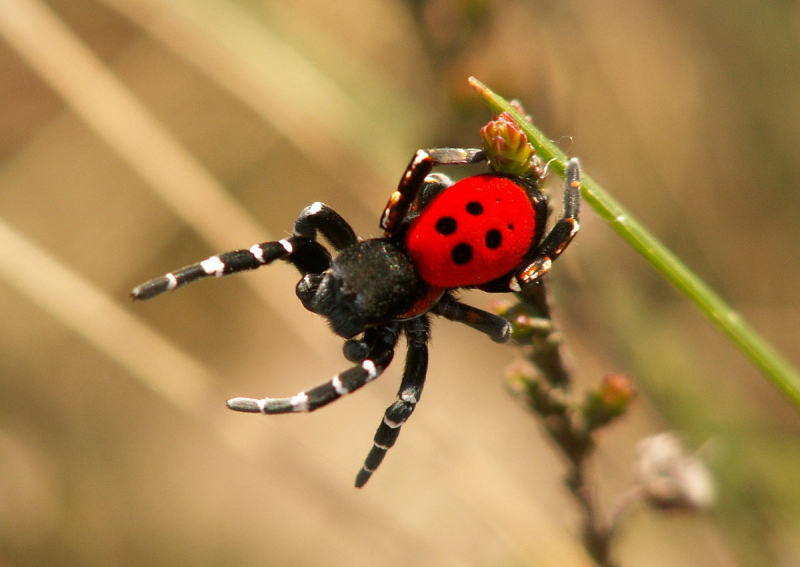Ladybird Spider
The Ladybird Spider gets its name from the male spider’s appearance. Males are around ¼ inch long and resemble ladybird beetles with their bright red or orange abdomen and distinct black markings (or ladybug). Although they have striking white stripes running along their legs, the rest of their body is mostly black. Ladybird spiders are entirely black in color and about a half-inch larger than males. These brightly colored spiders make silk-lined burrows and canopies that they inhabit in northern and central Europe.
The 1981 Wildlife and Countryside Act provides protection for ladybird spiders, and the British Red Data Book lists them as an endangered species due to habitat degradation. However, conservation initiatives are attempting to aid in the reintroduction of the ladybird spider to Britain. In fact, this spider increased from only fifty remaining in Britain to over six hundred in just over 10 years.
The Ladybird Spider (Eresus sandaliatus) has a fascinating mating behavior that adds to its unique characteristics. During the mating season, the male performs an intricate courtship dance to attract the female's attention. This dance involves tapping the ground with his front legs and vibrating his abdomen while producing pheromones to communicate his intentions. If the female is receptive, she responds by reciprocating the tapping and vibrations. The courtship dance is crucial for successful mating, as the female can be aggressive and attack potential mates if they do not perform the dance correctly. Once mating is successful, the female lays her eggs in a silk cocoon, which she carefully guards until the spiderlings hatch.
Due to habitat degradation and loss, the Ladybird Spider faced a severe decline in population, leading to its endangered status. However, conservation efforts and protective legislation have led to significant progress in increasing their numbers and reintroducing them to suitable habitats in northern and central Europe. The dedication to conservation initiatives has resulted in a remarkable recovery, with the population growing from mere fifty individuals in Britain to over six hundred within a decade, offering hope for the continued survival of this striking and ecologically important spider species.













